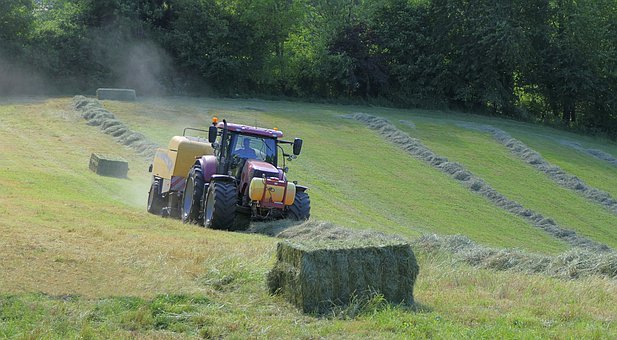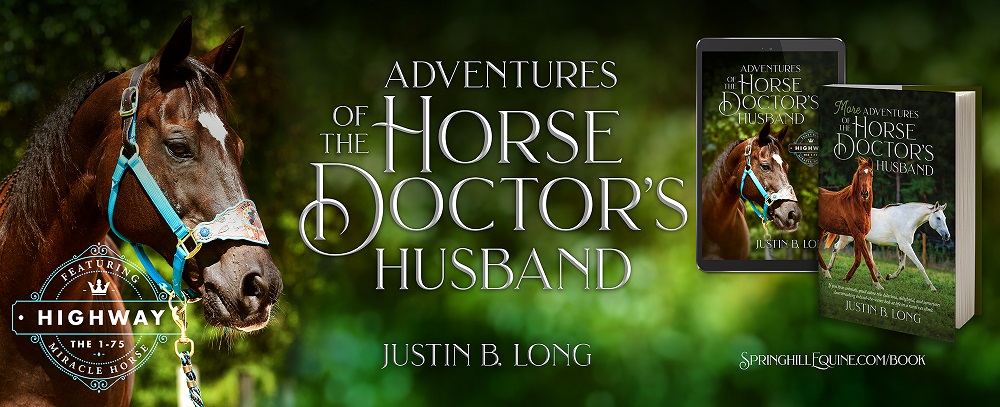Tuesdays with Tony
I’ve gotten a bunch of questions recently about what is appropriate to feed your horse, and more specifically, what is the best kind of hay to feed. You all must be very smart coming to the cat for advice on food, best move yet. With so many different types of hay out there I can understand why you might be confused. And let’s be honest, with the prices of hay what they are, your hay purchase is certainly an investment. Each type of hay or combination thereof, has a place in feeding horses and some types may prove to be better than others for your horse. Just because one horse eats one kind of hay does not mean that hay is a one-type-fits-all and it may not be appropriate for other horses.
Hay can be classified into legume hay or grass hay, within these two categories fall all the different types of hay. Let’s check them out.
Legumes
Legume hays are hays such as alfalfa and peanut hay. These types of hay are high in protein and energy content while being lower in fiber. Alfalfa also has higher levels of calcium. Hay with a higher protein and energy content are ideal for the young, growing horse, the performance or working horse, and lactating mares. Similarly, the higher calcium levels of alfalfa are excellent for lactating and pregnant mares. However, just because you like alfalfa or peanut hay does not mean that you horse needs it.
Is your horse a pasture potato? Does your horse go on the occasional walking trail ride, or does your horse have metabolic changes like yours truly? Well, then, you probably do not want to feed them a hay that is high in protein and energy. Because of its lower fiber content and higher protein levels, legume hay can lead to obesity in your horse. While horses are not likely to become diabetic, they can become insulin resistant or develop equine metabolic syndrome which makes them prone to becoming overweight (which I wouldn’t know anything about, I’m as fit as a fiddle) as well as making them prone to developing laminitis and subsequent founder. Be sure to talk to my docs to see if your horse is at risk for metabolic changes.
Did you know that the higher calcium levels in alfalfa hay have been shown to help decrease the incidence of gastric ulcers? Research as shown, and you all know I love my research, that the calcium in alfalfa hay acts as a buffer to the pH of the stomach and can reduce the incidence of gastric ulcer in your horse. I recommend, however, if you suspect your horse has ulcers that you bring him into the clinic for evaluation and gastroscopy before changing up his feeding regime.
Alfalfa tends to be slightly more expensive than peanut hay. I have heard from my minions that peanut hay can be messy to feed, so some people avoid feeding it. A little mess never bothered me, but then again, I have people to clean up after me.
Grass Hays
Grass hays are what I would be forced to eat if I were a horse. Not to say that they aren’t an excellent source of forage, I just prefer filet mignon over vegetables if you get my drift. Grass hays include timothy, Bermuda/coastal, tifton 85, and orchard hay. These hays are high in fiber with lower protein, energy and calcium levels than legume hay. They are ideal for the easy keeper type horse, the metabolic horse, and mature, non-working horses. Grass hay is a good source of forage for horses that may not have the most luscious pastures to graze on as grass hay can be fed in larger amounts without adding a significant amount of calories to your horse’s diet. This means they can munch on it all day without getting too fat. Hmmm, on second thought, grass hay isn’t sounding half bad. I would get to eat all day, so sign me up!
Yet another benefit of grass hay is that the dust content is lower, making it an excellent hay choice for horses who are prone to respiratory problems such as equine asthma. Grass hay has a wide range in cost as well. Some hay, such as coastal/Bermuda hay is relatively inexpensive whereas timothy hay can be significantly more expensive. You can be as fancy as you want with grass hay.
However, like legume hay, feeding certain grass hay is not without risk. Coastal/Bermuda hay and tifton 85 are very common grass hays that are fed in Florida. They are easy to get, inexpensive and generally have a consistent quality. However, if you look closely at these types of hays you will notice that their stalks are very fine. This, along with the anomaly that is the horse’s gastrointestinal tract can make a horse prone to colic due to coastal hay impactions. These impactions like to occur in the small intestine of the horse where it narrows from a larger tube-like structure to a smaller tube-like structure. The fine stalks of hay essentially layer on top of each other like a box of spaghetti and form these impactions. If you have ever seen a horse with a coastal hay impaction, then you know, it is not pretty. They get very painful and often require hospitalization, intravenous fluids and heavy sedation to recover. Some coastal hay impactions can only be corrected with colic surgery.
I promise I am not trying to scare you away from feeding coastal/Bermuda or tifton 85 hay. They are perfectly good hays to feed, and as you know, I am here to calm your fears. If you elect to feed coastal/Bermuda hay or tifton 85, you can decrease the risk of colic by adding in just a small amount of alfalfa or peanut hay each day. As little as 1/4-1/2 flake of alfalfa or peanut hay each day will suffice. Soaked alfalfa cube or pellets are also an excellent option and provide a win-win situation because you have to soak them in water, so your horse will be getting the alfalfa he needs and you’ll be forcing him to consume water without him even knowing it. See, you can lead a horse to water and make him drink, you just have to add alfalfa to it.
Remember, before changing your horse’s feeding routine, please consult with one of my docs. They will be happy to help you determine the best hay for your horse at this stage in his life and will help you develop an appropriate feeding regime based on your horse’s lifestyle. Nutrition is the most important part of keeping a healthy horse (and cat) so make sure you are setting them up for success!
Until next week,
~Tony
P.S. Don’t forget the humans have a great podcast that they put out weekly. Take a listen & then sign up. They cover all kinds of topics and have some pretty cool guest speakers too.
Tuesdays with Tony is the official blog of Tony the Clinic Cat at Springhill Equine Veterinary Clinic in Newberry, Florida. If you liked this blog, please subscribe below, and share it with your friends on social media! For more information, please call us at (352) 472-1620, visit our website at SpringhillEquine.com, or follow us on Facebook!
[jetpack_subscription_form title="Subscribe to Whinny's Wisdoms"]



